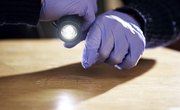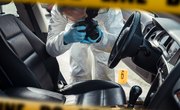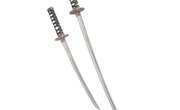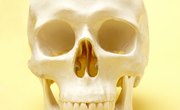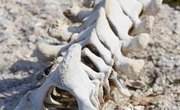Forensic firearms identification is the science of comparing and identifying crime scene bullets and shell casings with the markings made on rounds test-fired in a crime lab. Courses on firearms analysis are taught to law enforcement professionals at the local, state and federal levels, and they are also available online to the general public.
History and Background
Most introductory courses in forensic firearms analysis include instruction on how this science got its start back in the 19th century and how it has developed over the years. The history of this science demonstrates just how essential firearms identification has become to crime investigation today. Some forensic firearms programs even require classes in the history of firearms and propellants, which gives students in-depth understanding of how these weapons function.
Identifying and Examining Firearms
Another important component of forensic firearms training is firearms identification and examination. A firearm examiner needs to be able to identify and classify different types of firearms and be able to determine whether or not they are functional. Understanding how different firearms operate will also make it easier to understand and locate what types of markings may be present on spent bullets and cartridge cases. Many courses will also cover the proper receipt and handling of firearms involved in crimes so that evidence will not be compromised in any way.
Toolmark Identification
Toolmark examination and comparison is a core area in the study of forensic firearms analysis. A firearm is considered to be a type of tool, and as such, has unique microscopic characteristics resulting from how it was manufactured and the type of use it has seen. These characteristics leave distinctive marks on spent bullets and casings, and these marks can be reproduced in a lab setting and then used to identify whether or not a certain firearm was used to fire a particular projectile.
Projectile Analysis
Another important component of forensic firearms analysis involves identifying the bullets and cartridge casings found at crime scenes to determine what type of weapon they were fired from and to observe any microscopic markings that might have transferred from the barrel of the weapon to the projectile itself. Students will learn what types of marks to look for and different ways these marks may be reproduced on lab-fired projectiles. Students also become familiar with modern laboratory techniques and equipment for locating the marks on the projectiles collected at the crime scene.
Related Articles
References
- National Forensic Science Technology Center: Firearm Examiner Training
- Bureau of Alcohol, Tobacco, Firearms and Explosives: Firearms-Related Training for Law Enforcement: National Firearms Examiner Academy (Course ID FRMS-PG-0002)
- National District Attorneys Association: Firearm Identification in the Forensic Science Laboratory
- National District Attorneys Association: Firearm Identification in the Forensic Science Laboratory
- National District Attorneys Association: Firearm Identification in the Forensic Science Laboratory



